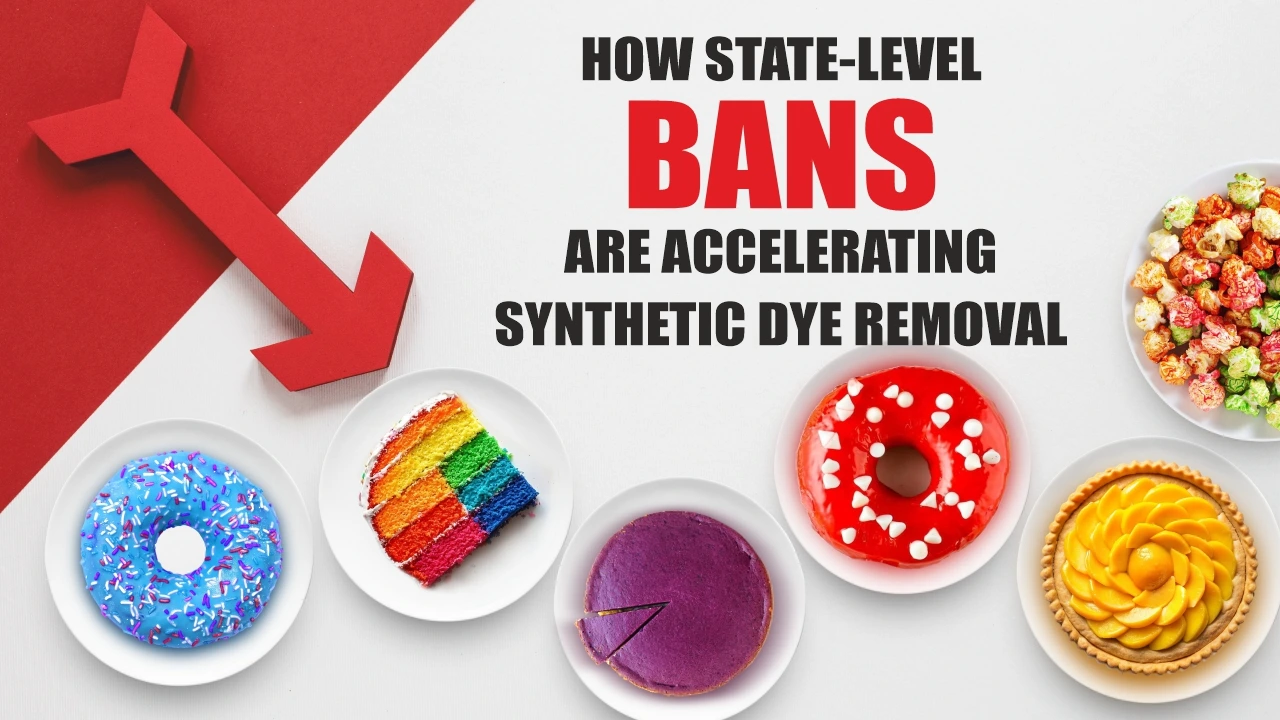
Synthetic food coloring has been a hallmark of processed food for decades in America and around the world, but increasing health concerns regarding their possible effects are reshaping the food industry landscape. Drawing together scientific data has determined some petroleum-derived colors to be linked to hyperactivity, allergies, and unfavorable long-term effects on children.
States are taking a leadership role in reconsidering color additive safety. California, West Virginia, and Virginia have already passed bans or restrictions, a national trend. As legislative momentum gains strength, natural food colors will be the standard.
West Virginia ranks low on many health measures and it hit the headlines when West Virginia became the first state in the U.S. to pass a sweeping legislation banning food dyes, including Red 3, Red 40, Yellow 5, Yellow 6, Blue 1, Blue 2, and Green 3, in the early part of 2025. The bill begins with school lunches and progresses to a full ban across the state by 2028.
This is due to rising public outcry against the use of artificial color among children and pressure from lobby groups calling for safer options. To manufacturers, it means that any product put in the market in West Virginia must be reformulated to fit new natural colors, calling for reformulation timelines.
California has historically been a trendsetter on food regulation, and the state’s recent prohibition on six artificial food dyes that are added to foods that go into public school cafeterias is no exception. By targeting high-profile foods served in public schools, the bill attempts to directly affect the health of children but inadvertently compels manufacturers to reformulate for the larger market.
Considering the size and market power of California, this action is going to have a ripple effect throughout the whole US food supply chain. The nationally branded companies should brace themselves for the presumption that what occurs in California is going to become the standard elsewhere.
Besides West Virginia’s general prohibition, Virginia and Utah also passed new legislation limiting utilization of artificial food colorings in the school lunch program. Virginia was a follow-up to West Virginia’s challenge to coloring in school lunches, while Utah’s HB 402 prohibits the use of certain synthetic dyes and additives in foods served in public schools, classifying them as not permitted in the school meal context..
Together, these state efforts reveal a growing regional domino effect, especially in school systems whose primary objective is the nutrition of children. They suggest the way state law and local activism are propelling food reform faster than the federal agencies alone.
The U.S. Food and Drug Administration (FDA) and the U.S. Department of Health and Human Services (HHS) recently released a phased plan to move away from petroleum-based synthetic dyes in the federal food supply. This federal initiative parallels state momentum, providing a uniform course of action for food manufacturers.
FDA is also approving and making available natural color additives like butterfly pea flower extract, spirulina, and paprika oleoresin at the same time. That this is happening both through eliminating artificial dyes and through increasing natural approvals makes reformulation in industry more easily done. Market Impact: Increasing Demand for Natural Colors
With regulatory wave and consumer pull in its favor, U.S. demand for natural colors is increasing at historic pace. Consumers grow more cautious about packaging that carries “synthetic” or “artificial” dyes and move towards brands that are committed to botany-derived, classical ingredients.
Natural colors follow health and safety trends and also bring marketing benefits to a company. They are a better for you kind of ingredient compared to synthetic and petroleum derived food dyes.
When prohibitions come into effect and reformulation deadlines loom, manufacturers need partners who can offer reliable, scalable, and regulation-friendly solutions. Vinayak Corporation joins U.S. brands at this time of transformation with:
Ecocol Natural Colors: Vinayak’s ECOCOL range has a robust range of stable, plant-based colorants like spirulina, turmeric, paprika oleoresin, butterfly pea flower, anthocyanin, beetroot, vegetable charcoal, natural TiO2 substitute, annatto and specially formulated
Technical Capability: Recommendations for pH compatibility, thermal stability, and application-specific concerns in beverage, confectionery, bakery, dairy, and nutraceutical use.
Custom Formulations: Natural color solutions to replace synthetics without reducing product attractiveness.
Scalable Sourcing: Reliable global supply chain and sustainable agronomy programs to provide repeat quality and access.
With Vinayak, food and beverage companies can reformulate with certainty, well ahead of changing regulation and meeting consumer demand for safer, natural products.
West Virginia, California, and Virginia state bans are not unique instances, they are at the forefront of a national movement away from artificial food dyes. With the FDA’s industry-wide phase-down program fueling this trend, the U.S. food industry is on the verge of entering an era in which natural colors will reign supreme.
Firms that move early in adopting natural solutions will be rewarded with consumer confidence, stay ahead of regulatory barriers, and be at a competitive advantage. Vinayak Corporation is poised to lead this shift with experience, innovation, and regular natural color solutions.
Vinayak Ingredients (INDIA) Pvt. Ltd. has over 24+ years of experience in delivering high-quality Food Additives. We focus and manufacture products obtained from Natural sources such as Natural Colors, Spray-dried Fruit and Vegetable Powders & Natural Extracts which are eco-friendly and environmentally sustainable.